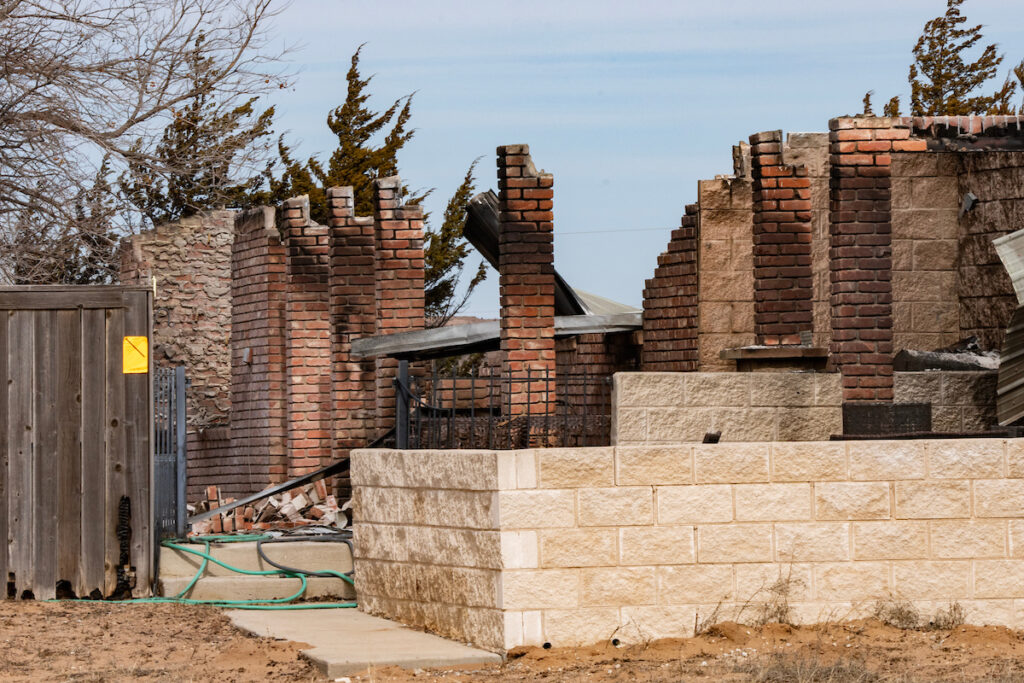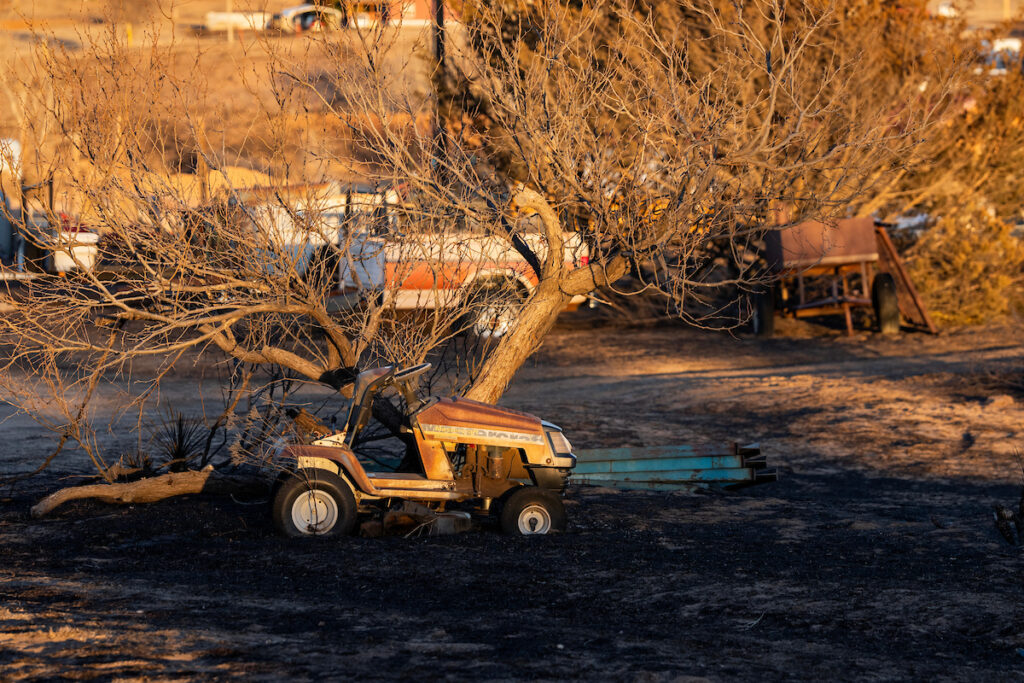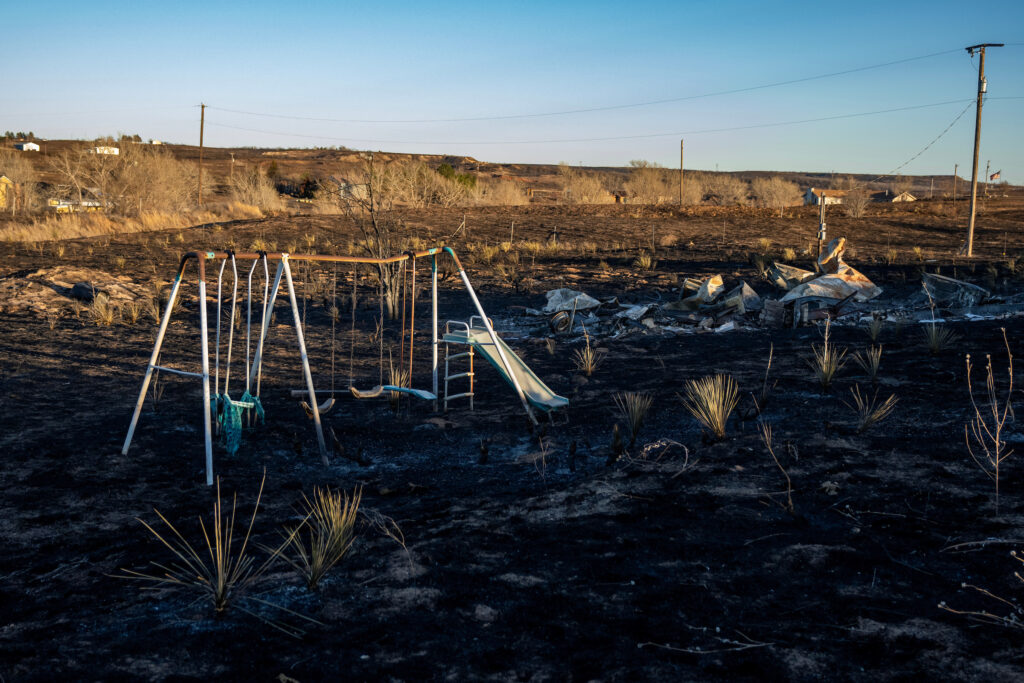Coming back to your home after a wildfire can be overwhelming and possibly dangerous. It is imperative that you take the time to take care of yourself and move through the process diligently. Remember to only enter after local officials have deemed the area safe to return.
INITIAL ENTRY
Upon reaching your property, take a moment to become situationally aware.
- Do you smell gas?
- Can you hear crackling?
- Can you still see embers or smoke?
Take a moment and remember what was stored in your home and how those items may add to the risk of your entry.
- Before entering, you must wear clothing to protect you from ash that has fallen in and around your home. Wear boots, pants, long sleeved shirts, hat, mask/respirator, gloves, and goggles.
- Once you enter, look up, down, and all around. You are looking for any indication that your home’s structure may not be sturdy. If there is any doubt, get out.
- Find your electrical breaker and gas lines. Turn off all power to your home. Water damage and partial burns could have compromised the wiring.
- Check all rooms, roof, attic, and gutters for any embers or structural hazards.
- Telephone poles and trees could still be burning and could cause harm to your home even after you’ve returned.



DOCUMENTATION
- Take pictures and document all damage. The more information that is available for your insurance agent, the better. Make contact with your insurance on the next steps. They may ask you to wait to clean your home until an agent can look at it.
- Texas Division of Emergency Management has a damage reporting portal called iSTAT. This portal is used to request federal funding for an area affected by a disaster. This web app is not for insurance or personal reimbursement purposes.
CLEANING
- Once you have inspected your home, documented all damage, and contacted your insurance agency, you will likely want to begin cleaning. There will potentially be large accumulations of ash in and around your home.
- When cleaning ash off of furniture and floors, do not dust or dry sweep. Instead, dampen the ash with a spray bottle filled with water (while wearing safety gear previously mentioned). This will minimize ash stirred by cleaning. Scoop ash into a trash bag and dispose of according to city/county officials. If the ash potentially contains hazardous material, such asbestos, roofing material, or treated lumber, contact the local fire/HAZMAT team for guidance.
- Make sure to clean off all children’s toys before allowing them to play. It is best to not allow anyone but the cleaners in the home to minimize risk.
- It is recommended that pets do not return with you for initial cleanup. Potential hotspots on the ground can cause injury as well as loose livestock or scared wildlife. Pets can also be injured from ash inhalation.
- If weather permits, leave doors open to allow for wildlife which may have taken refuge in your home, to leave on their own. Contact your insurance agency for best practices on covering broken doors and windows.
- Organic ash that has fallen in your yard can be sprayed off of the vegetation with a water hose. Potentially hazardous ash should be handled according to local HAZMAT crews.
- It is okay to use a shop vac to vacuum up dust. Use a HEPA filter and dampen each layer of ash before you remove it. Dispose of vacuumed ash properly.
- After initial ash cleanup, the smell of smoke will be lingering in your home and on your belongings. Baking Soda is a easily available household item that can be used as a deodorizer. For more smoke removal tips, go to: tx.ag/RemoveSmokeSell
WHAT’S NEXT?
- Once your home has been fully cleaned, contact the city and residential service providers to clean/run safety checks on appliances and to turn your utilities back on. It is best practice to contact a home inspector before any major changes after a disaster.
- Always follow local laws and procedures for home return and waste disposal. For any questions, contact local officials or Texas A&M AgriLife Extension Service

